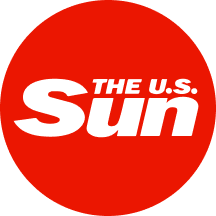
By Stella Qiu
SYDNEY (Reuters) -Australia's annual wage growth steadied in the June quarter after more than a year of declines, led in large part by gains in the public sector, implying a solid rise in real earnings that should support consumer spending.
Figures from the Australian Bureau of Statistics on Wednesday showed its wage price index rose 0.8% in the second quarter, dead in line with market forecasts.
Annual pay growth held steady at 3.4%, having dropped from 4.1% the same time a year earlier. Wages in the private sector rose 3.4%, while those in the public sector increased 3.7% as backdated pay rises came into effect.
"The labour market is softening, which will ultimately weigh on wage growth. But we are not quite there yet," said Sean Langcake, Head of Macroeconomic Forecasting for Oxford Economics Australia.
"Wage growth of 3.4% will keep labour costs elevated, especially if productivity growth continues to crawl. This means the RBA’s default approach will be a cautious one when it comes to further rate cuts."
The Reserve Bank of Australia expects wages growth to hold steady around 3.3% this year thanks to the renewal of large public sector agreements and announced decisions on awards, but over the long term, the downgrade to productivity means wages growth would average just 2.9%.
The central bank just a day ago cut interest rates for a third time this year to 3.6% as inflation slowed and unemployment moved higher, but said it was still cautious about the outlook.
With headline inflation at just 2.1% in the second quarter, that implied a solid rise in real income growth, supporting household spending.
All eyes are on the labour market, with a recent jump in the jobless rate to 4.3% from 4.1% in one month fanning concerns about a weakening trend.
For now, though, the RBA still judges the jobs market to be a little tight.
Analysts at Citi Australia believe any deterioration in the labour market would firm the case to cut rates.
"We see risks of an uptick in the unemployment rate to 4.4%-4.5%, and thus keep our September and November forecast for a 25bp cash rate cuts unchanged," they said in a note.
Swaps imply just a 34% probability that the RBA would follow up with a September cut, although a total easing of 58 basis points has been priced in to a terminal rate of 3% by mid next year.
(Reporting by Stella Qiu and Wayne Cole; Editing by Tom Hogue and Sam Holmes)

 Reuters US Economy
Reuters US Economy
 America News
America News Ideastream
Ideastream 13 On Your Side
13 On Your Side NBC News
NBC News People Top Story
People Top Story WISC-TV Channel 3000
WISC-TV Channel 3000 NBC Bay Area Dixon News
NBC Bay Area Dixon News CNN Business
CNN Business The US Sun Lifestyle
The US Sun Lifestyle WMUR Politics
WMUR Politics